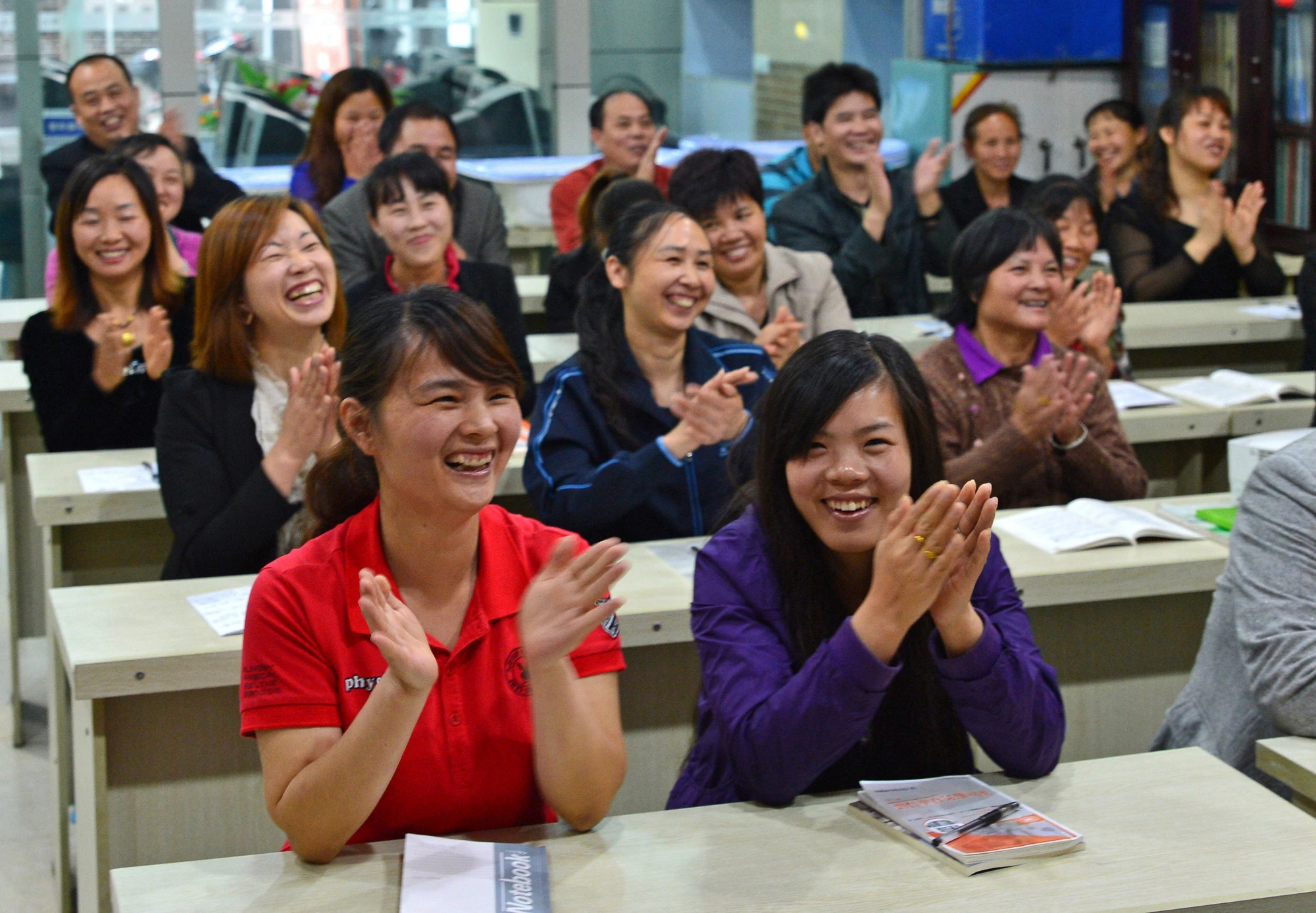 Adult students in a classroom receiving skills training
Adult students in a classroom receiving skills training
Noncommunicable diseases (NCDs) have become the major – and growing – contributors to death and disability worldwide. China is no exception, particularly as it increasingly faces many of the same challenges that high-income countries face, such as high-risk behaviors like smoking, sedentary lifestyles and alcohol consumption and air pollution.
Indeed, a 2016 joint study by the World Bank Group, the World Health Organization and Chinese government agencies called NCDs “China’s number one health threat.” The study reported that NCDs – which include cancer, cardiovascular disease and diabetes – are responsible annually for more than 85% of Chinese deaths and 77% of the loss in healthy life, “a profile similar to that of most OECD countries.”
In China, primary care is widely viewed as an essential platform for prevention, early diagnosis and treatment of NCDs. As part of its own health reform process in recent years, the country has sought to transition its health care delivery system toward one that is more people-centered, high quality and integrated with other tiers of the country’s overall health network.
Knowledge Exchange Supporting Health Reform
In 2015, the Chinese government committed $4.1 billion to strengthen health care services in the provinces of Anhui and Fujian, where a combined 100 million people live. Since this pilot program began, health officials in those provinces have had the resources and autonomy to innovate and experiment with new approaches that, if successful, could be replicated and scaled in many of the other 32 provinces and municipalities across the country.
Two years later, the World Bank announced it would supplement that initial investment in Anhui and Fujian with an additional $600 million. It was the first human development project in China, and the largest non-emergency Bank loan to the country ever.
A portion of the financing – combined with funding from Access Accelerated, a private sector collaboration, multilaterals and leading non-profit partners – helped launch a series of domestic and international learning activities. These have allowed health providers and administrators in Anhui and Fujian to consult with experts around the world and receive real-world guidance they could apply to their work. These initiatives also made it possible for many other health experts across China and other developing countries to learn from the two provinces.
To date, much of the knowledge exchange has centered on how best to expand primary health care. According to Rui Liu, a Beijing-based World Bank health specialist working in Anhui and Fujian and elsewhere in China, the country’s health system has historically been very similar to most of the systems in transitioning economies. Unlike countries such as the U.K. and the U.S., where most patients go first to a primary care facility when they need care, “here, most people directly go to a hospital when they don’t feel well,” he said.
From Hospital- to a people-centered approach
Today, the reforms are trying to steer away from that kind of hospital-centric approach toward one that is people-centered, and from disease treatment to long-term health promotion and management.
In Anhui and Fujian provinces, the aim, in part, is to boost the quality of health services at the local level, through integrated health alliances that link secondary and tertiary to the local primary centers. For example, the provinces bring more experienced doctors and nurses to poorer, more remote areas. Alternatively, they use telemedicine when those providers can’t be physically present to boost both prevention and treatment.
These initiatives also intend to drive down hospital and pharmaceutical costs. Since 2018, a new health insurance program was introduced. It has proven to be more efficient, affordable and comprehensive, especially for lower-income people in rural areas. China’s transition to people-centered care is far from over.
International knowledge sharing
This allowed health leaders from Anhui and Fujian to travel to Washington, DC, to learn about integrated health care systems at a seminar organized by the World Bank and see a major integrated healthcare service provider in the United States, Kaiser Permanente in operation. Practitioners also travelled to Costa Rica and Brazil, where they visited hospitals, maternal and child health centers, community health service centers and other medical and health institutions; and to Indonesia, where they learned about the country’s social security and health insurance systems.
In exchange, the program also brought leaders from other countries to China to learn about the lessons of health reform. Rui recalled during one of those exchanges, a delegation of Vietnamese health officials travelled to Fujian in 2018 to learn how the China’s Basic Public Health Program (BPHS) was funded.
The World Bank’s partnership with Access Accelerated in China is truly a collaboration that has promoted knowledge sharing about health care reform beyond borders. As Rui said, “we want to get the maximum value out of these experiments, and that includes sharing what works with others to put it to good use. We want people from all these places to talk to each other and share and use what they learn.”


Join the Conversation